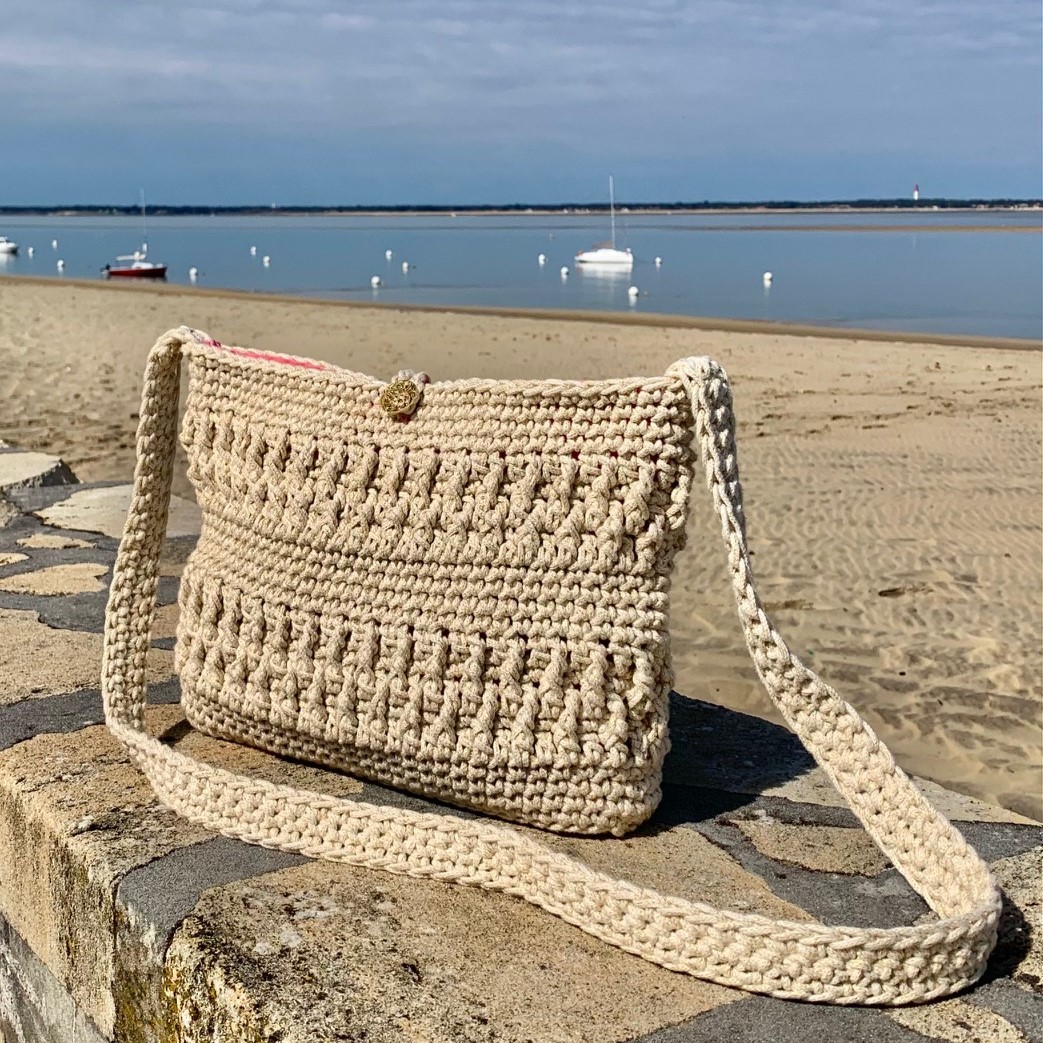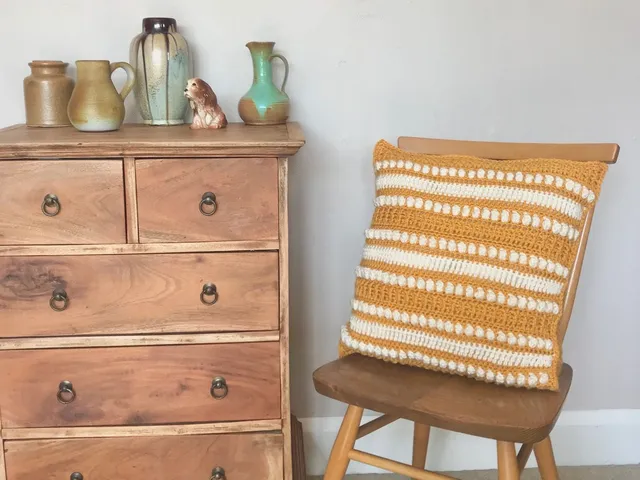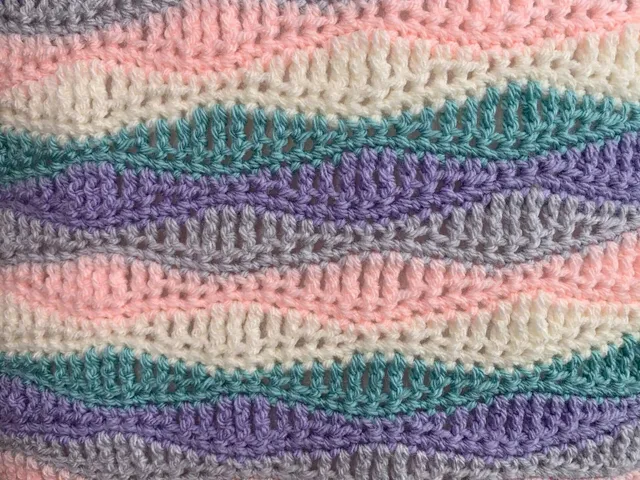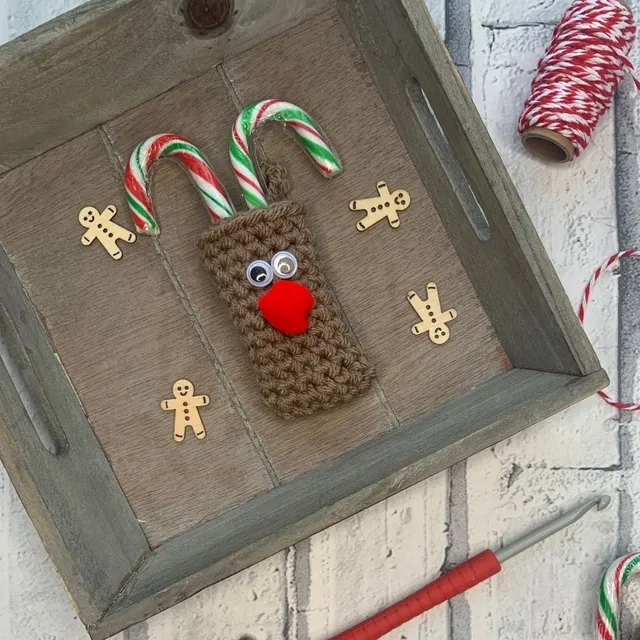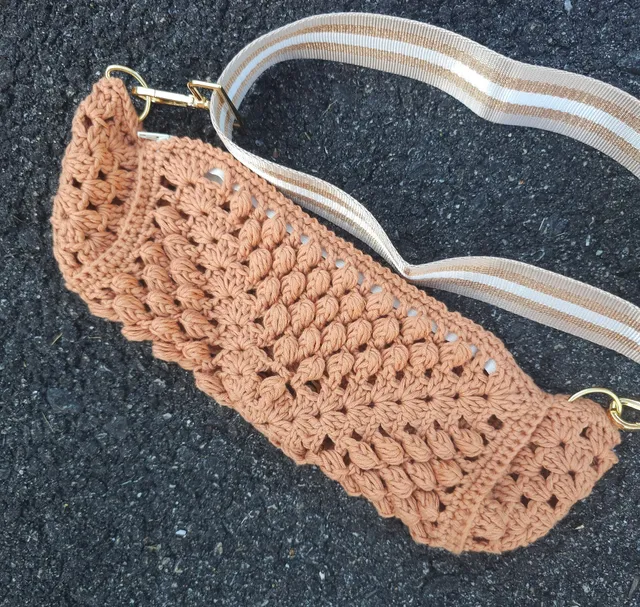How to make a Knotted Fringe
Learn how to make a knotted fringe and create a different fringe for scarves and blankets. This crochet fringe alternative is a great way to add more interest to a plain scarf.

Please note that some of the links in my blog are affiliate links. I may earn a small commission if you purchase via these links, but the price you pay is not affected
Crochet Fringe Alternative | Knotted Fringe
Knowing how to add a fringe to your crochet scarves and blankets and add a finishing touch like nothing else.
A fringe can add a swish to those plainer scarfs by adding a secondary or contrasting colour, as well as adding additional length where it’s needed; a fringe added to blankets can give sense of luxury and a great finish making them both more gift-worthy.
Whatever project you are adding a fringe to, this article will show you how to make a knotted fringe; a crochet fringe alternative that will take your fringe from basic to beautiful!
How Long Should a Fringe Be?
A fringe can be any length you want, it’s personal choice, but the average fringe tends to be sized between 6 inches to 12 inches long.
Whatever length you want your fringe to be, you need to cut the strands double the length you want the finished size to be. For example:
- 6 inch fringe – cut 12 ” lengths of yarn
- 12 inch fringe – cut 24″ lengths of yarn
It’s always best to cut your fringe longer than you want so that you can trim the ends once your fringe is in place to create a straight edge. It’s easier to trim an overly long fringe as if your strands are too short, you will have to re-start and cut more yarn.
How long should the yarn strands be for a knotted fringe?
When cutting the strands for a knotted fringe, you need to add extra length to allow for the knotting; this uses more yarn that you realise.
- For a single knot fringe – add an extra 3 inches to the length of your strands
- For a double knot fringe – add an extra 6 inches to the length of your strands

How many strands per fringe group?
When making a fringe, you can use as many strands as you like in each fringe group. For a full looking fringe 3 strands is a good number per group.
The number of strands you should use in each group, will also depend on the thickness/weight of the yarn you are using.
In this tutorial showing how to make a knotted fringe, I used super chunky yarn which only used 2 strands per fringe, but if you are using a size 3 yarn or size 4, you could easily use 4 strands per group for a fuller fringe.
I added this knotted fringe to the Roving Dreams Bed Runner to add extra length to hang over the side of the bed.
In a traditional fringe, you will find that most people use an odd number of strands in their fringe groups – 3, 5, or 7. As we will be dividing the number of strands used by 2, an even number of strands is used for a knotted fringe.

What you’ll need to make a Knotted Fringe
Materials:
- Any Yarn – use the same weight yarn used in your project
- I used 1 x Sirdar Adventure (80% Acrylic, 20% Wool) (200g, 106m/115yds) in the shade Golden Dawn
- Recommended hook size for the yarn being used
- I used a 12mm Crochet Hook as recommended by the yarn
- Scissors
Finished Size:
- Cut your strands to a minimum of 24 inches (60 cm) long
- To ensure a long fringe (12″) after creating the knotted fringe, cut your strands 30 inches (76 cm) long
Number of Strands Needed:
The number of strands needed will depend on the length of your project edge that you are adding your fringe to and how close you want your fringe groups together.
For the Roving Dreams bed runner (pictured above), I used 18 strands on each edge:
- 9 fringe groups x 2 strands = 18 strands required
For the tutorial, I placed the fringe groups closer together, with less skipped stitches in between and used 32 strands measuring 24 inches.
Prepare Your Yarn | How to make a knotted Fringe
Plan your yarn length for each strand
Cut a few lengths of your yarn , fold them in half and hold them up to the edge of your project to see the length – remember for the knotted fringe, you will use 6 inches for the knots.
Suggested lengths:
- Cut your strands to a minimum of 24 inches (60 cm) long
- To ensure a long fringe (12″) after creating the knotted fringe, cut your strands 30 inches (76 cm) long
Decide how many strands in each group you need
Place a group of strands together and see how full the group looks – remember that for the knotted fringe, you will need an even number of strands.
Space out your Fringe Groups
When spacing your fringe out for a tied fringe, the larger the space between your fringe groups, the more pronounced the finished knotted look will be.
Take some time to plan where you are placing your fringe groups:
- Start in the middle of the project where the fringe will be placed
- space the next fringe group either side of your middle fringe group
- Leave a space between each fringe group of 1 inch to ensure the knotted fringe will be clearly visible
- Continue down the edge marking the placement with stitch markers
This will give you the total number of fringe groups you are adding so you can calculate the total number of strands required to be cut.
Cut Fringe Strands
Calculate the total strands per group by the number of fringe groups to know how many strands to cut.
e.g. 2 strands per group x 9 fringe groups = 18 lengths of yarn.
Use a ruler or measuring tape or my own choice of hardback book to ensure that all the strands are the same length.
How to make a knotted Fringe | Video Tutorial
Attach the Fringe
Choose which side you want to add your fringe – you can add it to the right side or the wrong side, to ensure that all your joins show on the same side, keep the project flat and do not turn while adding the fringing.
- Insert the crochet hook through your project in the 1st marked stitch. Make sure that you are inserting through the fabric, not through the yarn
- Fold the strand group in half and place the middle of the strands on the hook
- Bring the hook back through the fabric, ensuring that each strand has been caught and brought through the crochet fabric.
- Bring the tails of the strands through the loop created by the hook
- Gently pull on the tails to tighten the group to the project
Work across the edge repeating the steps above placing a fringe group where you have marked (or evenly across) before moving on to knotting the fringe.
Create the First Knot in the Knotted Fringe
The instructions below are based on fringe groups made from 2 strands. Create the knots using half the strands from each group if you have more than 2 strands in each fringe group.
- Pick up 2 strands from the 1st fringe group and the fringe group next to it leaving 2 strands unused from the 1st group
- Loop 1 group of strands around the other and bring the tails through the loop to create a knot
- Gently pull the looped tails to tighten around the other strand
3. Repeat Steps 1 & 2 using the 2 untied strands of the current fringe group, tying them to 2 strands from the next fringe group.
4. Aim to place all the knots at the same height.
5. Repeat across to end leaving 2 strands in the final section unworked
6. Tie a knot in the 2 strands at each end that are not joined to the other strands
How to Add 2nd Row of Knots
- Pick up the unworked, knotted outside strands from the 1st fringe group and 2 strands of the knotted fringe group next to it.
- Create a knot by looping 1 group of strands around the other and bring the tails through the loop to create a knot as before.
- Aim to position the knot the same distance away from the knot above as the 1st knot was tied from the project
- Gently pull the looped tails to tighten around the other strand
- Repeat across to end
This process of knotting the fringe can be continue as many times as you’d like – the pattern will just grow.
Trim the Ends
Once you have completed your knots, you will find that the lengths of the fringe may differ. This will be more pronounced if your yarn is wavy.
If your fringe is made of acrylic yarn or cotton, you can gently steam your fringe to encourage it to straighten before trimming.
If you fringe contains natural fibres, lightly dampen the fringe yarn and allow to hang to dry and the fringe will straighten – remember that heat and hot water can shrink wool fibres.
Place your project over the back or a chair or somewhere it can hang freely,. This will allow the fringe to hang as it would when worn or in use.
Find the shortest length of your fringe and trim the longer lengths to create a straight line.
Thank you for making a Knotted Fringe. There is nothing I love more than to see your finished projects, so snap a picture and share it with me!







